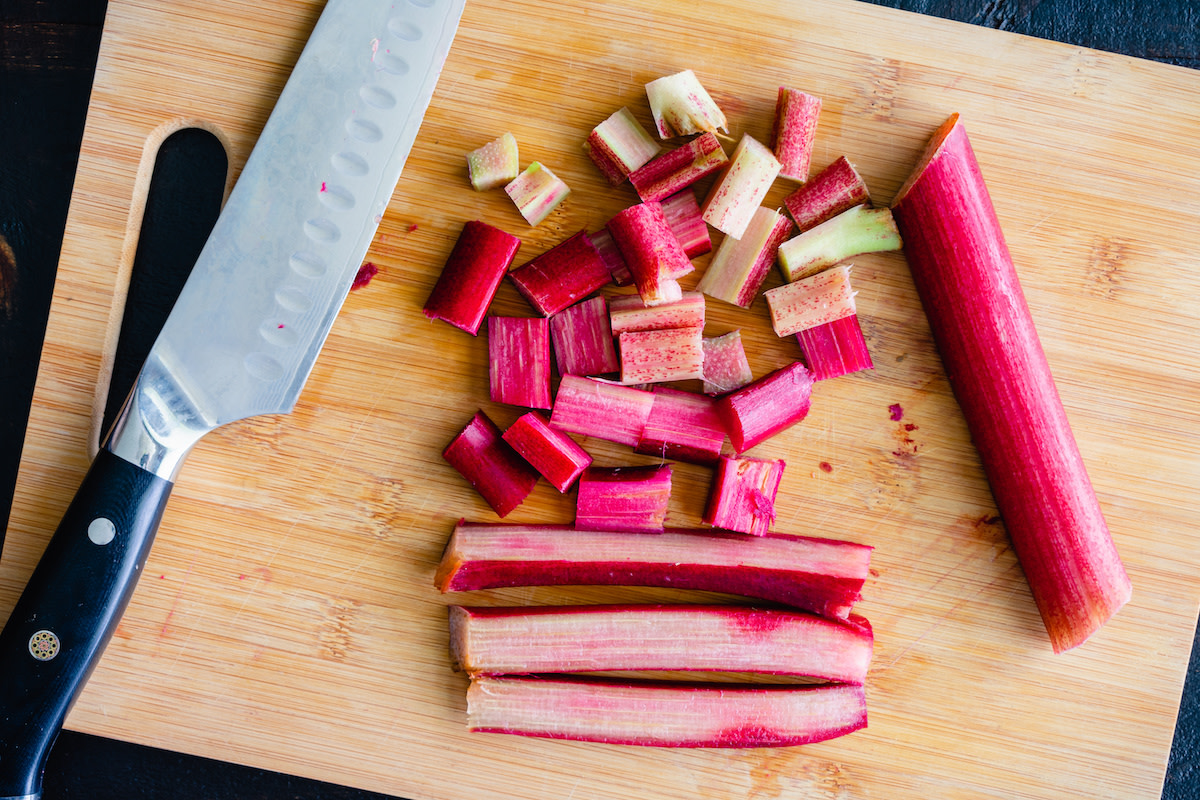How to Cut Rhubarb: 5 Tips for Harvesting Rhubarb
Written by MasterClass
Last updated: Sep 2, 2022 • 4 min read
Harvesting fresh rhubarb is a simple process you can complete by hand. Learn how to harvest the long, brightly colored stalks and prepare them for various baking recipes.
Learn From the Best
What Is Rhubarb?
Botanically speaking, rhubarb (Rheum rhabarbarum) is a perennial vegetable with large leaves and long, pinkish-red stalks (also called petioles). Though originally classified as a vegetable, a New York court legally declared rhubarb a fruit in 1947. The United States Department of Agriculture (USDA) has classified it that way ever since, partly thanks to how the slightly bitter stalk serves as an ideal template for desserts.
How to Cut Rhubarb Stalks
Depending on where you live, you can usually find the striking red rhubarb stalks in the grocery store year-round. If you grow rhubarb in your garden, harvesting fresh rhubarb takes some skill and is best accomplished without a blade. Follow these steps:
- 1. Harvest in the spring. The best time to harvest rhubarb depends on your climate and the plants. You should not harvest new rhubarb plants for the first year. Thriving plants will grow vigorously starting in the early spring, and if robust and healthy, you can harvest the stalks from the early summer into fall, depending on thickness and size.
- 2. Cut the rhubarb plants in the morning. When you’re ready to harvest some of your rhubarb plants, do so in the morning, after the plant has rested in the night’s coolness and before it gets too hot.
- 3. Check the size. You should only harvest rhubarb stalks that measure at least eight inches long. Harvest stalks that are half-inch to one-inch thick. Taking weaker inner stalks could hurt the plant, and stalks wider than one inch can be too fibrous and chewy for ideal cooking conditions. Typically, the outer stalks are thicker than those in the middle.
- 4. Twist the stalks. Grasp the stalks near the bottom, and give them a gentle tug and twist. They should come away from the ground relatively easily. If you get a lot of resistance, use a sharp knife and cut as far down as possible. Beware that cutting the stalks exposes the stalk, making it susceptible to bacterial and fungal infection.
- 5. Compost the leaves. Cut the rhubarb leaves off the top with a sharp knife. Rhubarb’s broad, green leaves contain high levels of oxalic acid, which is toxic to humans and animals, and, if left on the stalks, can also accelerate wilting. It’s best to cut the leaves after harvesting and put them in the compost or trash.
- 6. Remove the debris. Leave a few stalks on each plant to extend the harvest potential into the next year. A well-tended rhubarb patch will continue to produce for decades. At the end of the harvest season, remove all above-ground plant debris, and cover the patch with about four inches of mulch or compost.
5 Tips for Harvesting and Cooking Rhubarb
Rhubarb is versatile in the kitchen, but its celery-like stalks make it different from many of the fruits common for jams or pies. Below are some tips to consider when working with rhubarb:
- 1. Determine ripeness by size. Bright red stalks can be visually striking but don’t always indicate ripeness. Some varieties of rhubarb are more purple, while others remain green when ripe. It’s best to go by size when deciding when to harvest.
- 2. Make various rhubarb recipes. Rhubarb is a versatile fruit that works well for many baking recipes. Its tart flavor helps balance the high levels of sugar in pies and preserves; sweetness brings out its flavor. You can make rhubarb jam and jellies, strawberry rhubarb pie, rhubarb ice cream, rhubarb sauce, and stewed rhubarb for a dessert topping. If making jam, pies, or compotes, cut the harvested stalks into smaller pieces with a paring knife or chef’s knife.
- 3. Prune your rhubarb. In addition to what you cut for consumption, it’s also good to prune rhubarb plants to keep them healthy. When you remove flowering stalks, the plant will redirect its energy to making larger leaf-supporting stalks you can harvest and consume later. You should remove wilted leaves.
- 4. Store rhubarb in the fridge. Store the stalks for later use if you harvest an abundance of rhubarb. Gently wrap rhubarb in aluminum foil with the ends open to facilitate air circulation or in a perforated plastic bag, allowing rhubarb to keep in the fridge for up to a month. For long-term storage, rinse the stalks, pat dry with a paper towel, cut them into small pieces, place them in air-tight freezer bags, and put them in the freezer.
- 5. Use the right tools. With a bit of practice, harvesting the rhubarb stalks by hand is relatively easy. If you’re dealing with a particularly stubborn plant, a gardening spade can be helpful to detach the stalk as low as possible. Use a sharp knife to remove the tops.
Want to Learn More About Cooking?
Become a better chef with the MasterClass Annual Membership. Gain access to exclusive video lessons taught by the world’s best, including Alice Waters, Gabriela Cámara, Niki Nakayama, Chef Thomas Keller, Gordon Ramsay, Yotam Ottolenghi, Dominique Ansel, and more.
